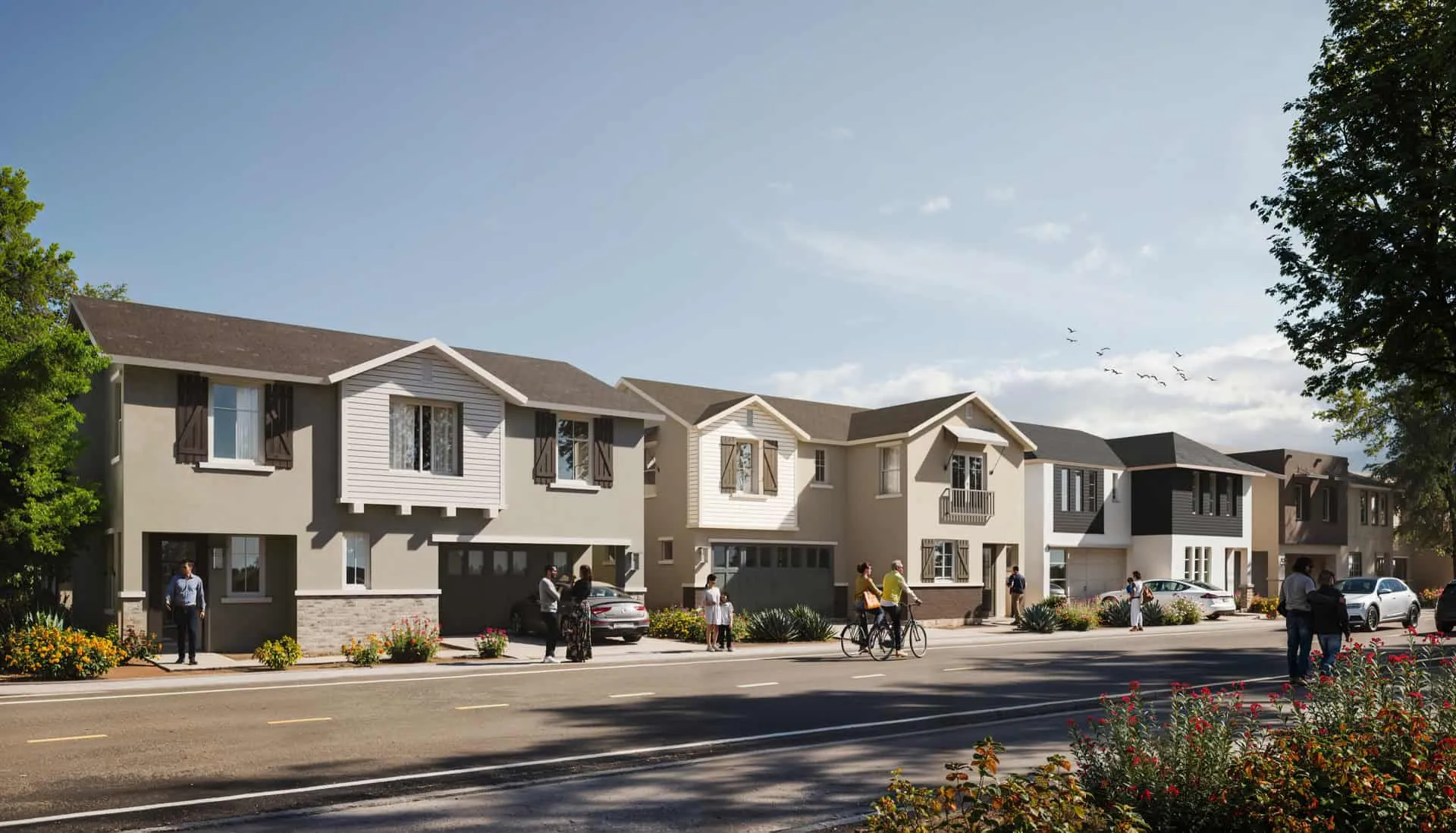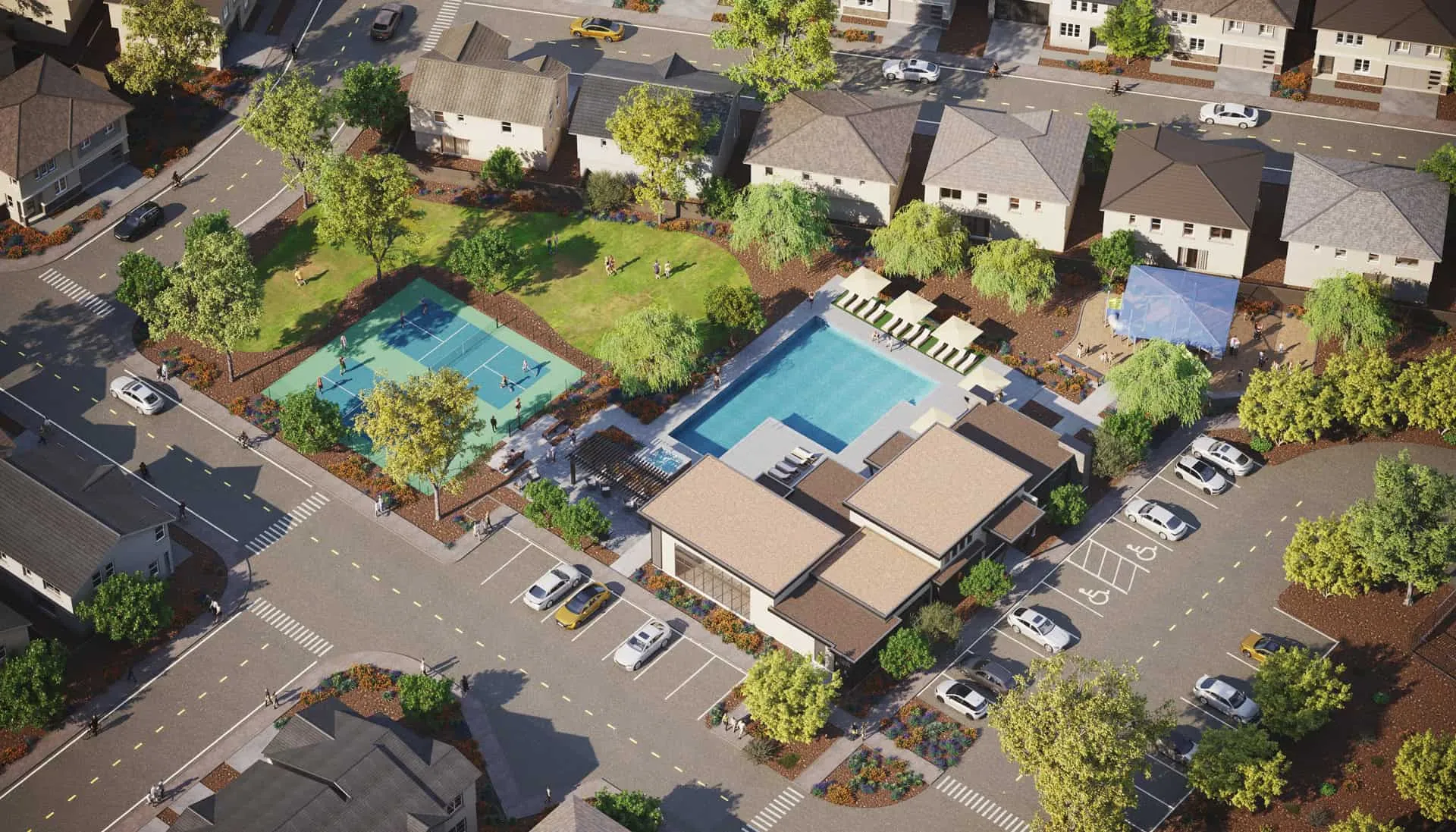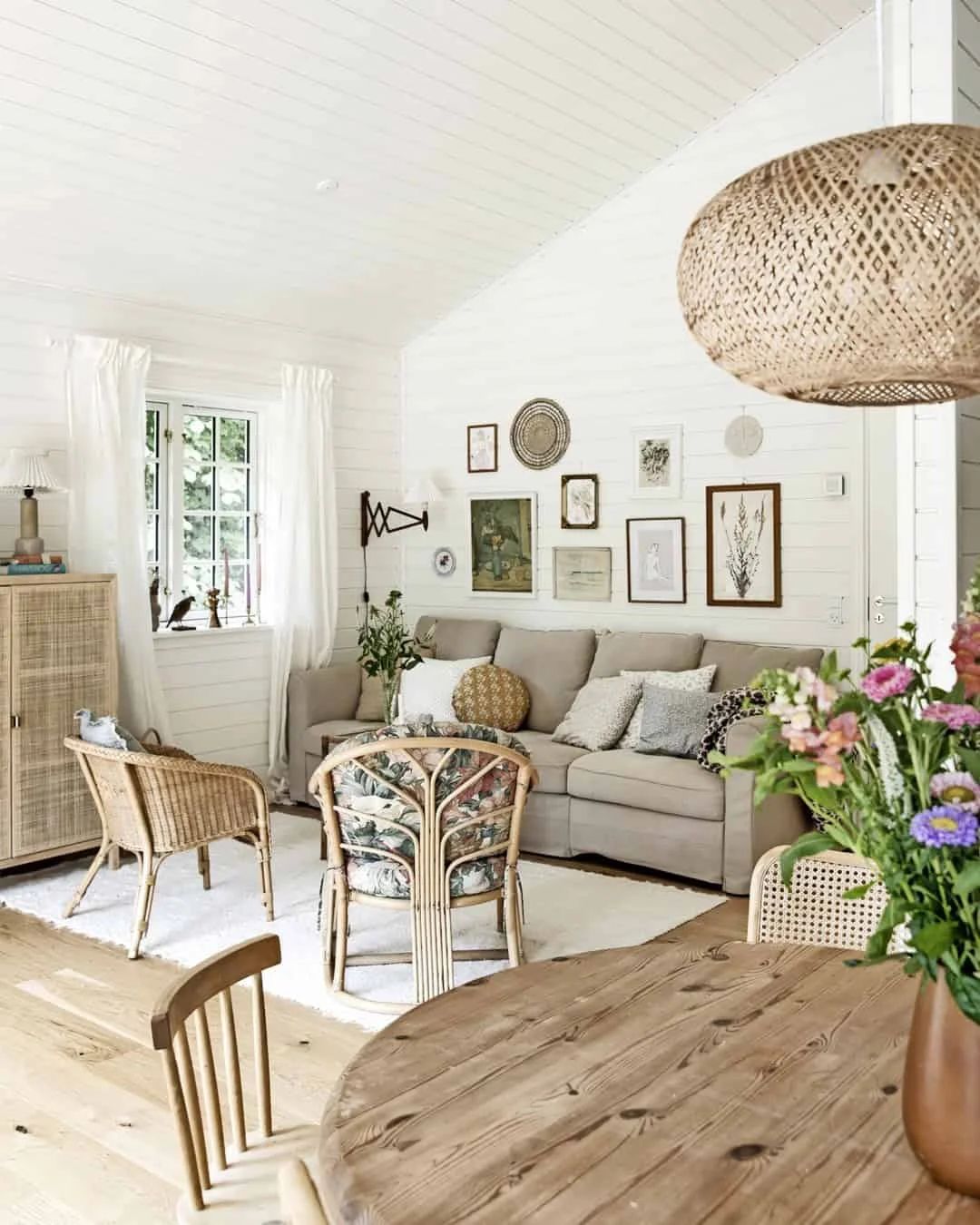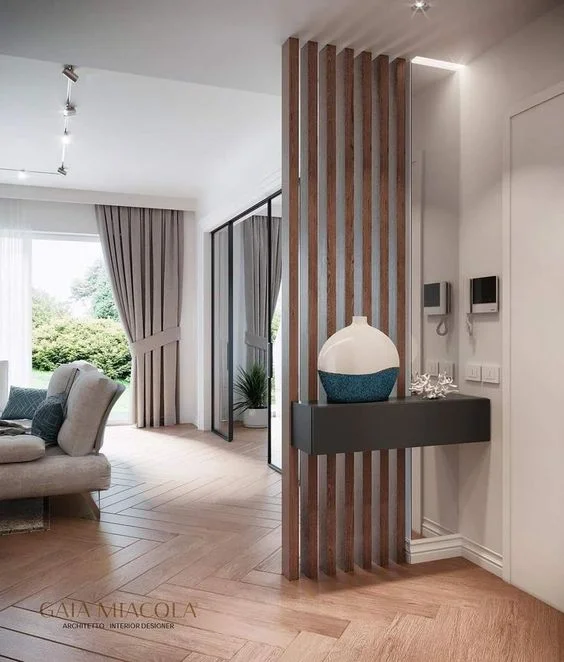There can be your advertisement
300x150
3D Visualization as the Perfect Solution for Customer Acquisition
The Shift to Visual Communication in Marketing
Approximately 84% of marketing communication now includes visual elements. This demonstrates the power of images in attracting and retaining audience attention. This shift represents a strategic turning point driven by the effectiveness of visual content in audience engagement.
The pandemic accelerated this process even further, urging organizations to adapt their strategies by incorporating more attractive and high-quality visual solutions. About 80% of marketers now use visual materials in their social media advertising efforts, leveraging the higher engagement rates of these formats.
 3D top view of the residential complex Fairview in Toronto, Canada, created by RNDR
3D top view of the residential complex Fairview in Toronto, Canada, created by RNDRWhy 3D Rendering is Changing How We Interact with Clients
3D rendering services provide visual representations of future investments using lighting, materials, and textures, which can significantly impact the overall atmosphere of a project. 3D visualization bridges the communication gap between designers and clients, fostering a clearer understanding of design intentions.
Unlike technical 2D plans, detailed 3D visualizations of exterior architecture and interior spaces allow clients to experience the space before construction begins, greatly enhancing their engagement and enthusiasm for the project. CGI rendering services enable viewing unfinished projects online, offering more potential buyers a complete understanding of the final product.
 Interior 3D visualization of a 16-story frame building in Washington, USA, created by RNDR
Interior 3D visualization of a 16-story frame building in Washington, USA, created by RNDRThe Power of 3D Architectural Visualization: Capturing Customer Attention Has Never Been Stronger
3D architectural visualization is a tool for attracting and retaining customer attention. 3D rendering transforms marketing, enabling potential clients to interact with architectural projects and interior design concepts. It provides an experience that changes how architectural projects and interior solutions are presented, communicated, and promoted.
#1 How 3D Architectural Visualization Captures and Retains Attention
Using 3D images allows consumers to explore architectural plans and interiors from various angles, effectively capturing their interest. The experience of immersive environments through realistic exterior renders and photo-realistic interiors increases user engagement with the design, making it a highly effective marketing tool.
Social media also benefits enormously from 3D visual content in the form of exterior and interior renders. Posts with images and videos typically generate more engagement than text-only posts, making 3D renders especially effective in marketing campaigns. They can be used to showcase residential, commercial, and public projects for better user experience and investor retention.
Moreover, visual content—especially 3D renders—can evoke emotional responses that strengthen memory and create lasting impressions for consumers. The ability to present complex features and requirements of a project simplifies understanding, helping consumers quickly grasp the value of architecture and easily visualize project needs.
#2 The Influence of Visual Content on Consumer Behavior Using 3D Renders
Research shows that 3D renders can increase consumers' readiness to purchase by allowing detailed exploration of residential and commercial projects such as shopping centers, hotel rooms, or floor plans of future homes. 3D renders serve as effective marketing assets, attracting potential buyers and homeowners by providing vivid visual representations of architectural layouts, floors, materials, and atmosphere. This enhanced buying experience improves customer engagement and confidence in purchase decisions.
 Exterior 3D render of the Rose Field Townhouse in Arizona, USA, created by RNDR
Exterior 3D render of the Rose Field Townhouse in Arizona, USA, created by RNDRHow 3D Architectural Visualization Forms Emotional Connections
3D architectural visualization helps architects create emotional connections with clients by presenting designs in an understandable and immersive format.
#1 Using Storytelling in Architectural Visualization to Influence Client Emotions
Stories in architectural visualization can evoke specific feelings that resonate with viewers, making them more emotionally connected. Utilizing CGI rendering services can create a sense of warmth and comfort, allowing viewers to envision their future life and experience through external and internal renders in the most effective way. Moreover, exterior 3D visualization can also show a building's context, enabling potential clients to emotionally connect with the functional needs of its surrounding environment, while interior renders can reframe mundane technical floor plans into engaging formats.
#2 Building Trust and Authenticity Through Detailed 3D Architectural Renders
High-quality 3D renders enhance trust by providing clients with realistic representations of their projects, displaying layouts, floors, and sections in a clear way. Clients are more likely to trust architects and designers when they're provided with realistic visualizations showing the final outcome of their projects.
3D renders help eliminate confusion by allowing clients to visualize structures and design elements instead of relying solely on drawings.
Visualizing Interior Design Before Construction
Using interior renders allows for detailed visualizations of interior design projects, facilitating effective communication of design ideas. 3D visualization enables stakeholders to experience a realistic preview of the project before construction, improving understanding and collaboration.
#1 How Photo-Realistic Interior Renders Showcase Possibilities Before Construction
Interior 3D renders offer a realistic preview of architectural alternatives, allowing stakeholders to visualize various layouts, floors, and materials prior to construction decisions. The ability to create photo-realistic interior renders enables architects and designers to effectively showcase different variations and possibilities of layout, aiding decision-making. These interior design renders accelerate project approval by clearly presenting the placement and furniture of a project to potential clients.
#2 Allowing Clients to See the Potential of Unfinished Spaces
3D visualization helps clients understand the future potential of spaces by showing how various design elements combine to create a cozy environment. These visualizations allow clients to understand spatial relationships, materials, and project elements, making it easier to envision the final outcome.
Besides, these visual materials allow architects to show how natural light will affect the space, ensuring optimal placement of lighting fixtures and building exposure.
 Interior 3D visualization of the Cabot Citrus Farms Fairway home in Florida, USA, created by RNDR
Interior 3D visualization of the Cabot Citrus Farms Fairway home in Florida, USA, created by RNDRAccessing a Global Audience: Presenting Designs to Interior Designers Anytime, Anywhere
3D visualization allows designers to present their concepts to clients regardless of geographical location, increasing accessibility. This technology enables architects and designers to showcase their projects to clients worldwide, overcoming physical location limitations. Using 3D visualization allows designers to reach a global audience, ensuring visibility and recognition of their design ideas by clients from different regions.
#1 The Power of 3D Visualization in Presenting Projects to Remote or International Clients
Using 3D visualization improves understanding between international stakeholders. This technology overcomes geographical gaps, enabling effective project presentations without the need for physical meetings.
#2 How 3D Renders Overcome Geographic Barriers in Real Estate Marketing
3D renders enhance real estate marketing by providing an immersive experience that attracts clients from different regions. These renders serve as important marketing tools, allowing potential buyers to visually experience properties regardless of their location. Impressive, high-quality visual materials significantly increase user engagement, leading to better visibility and reach on digital platforms compared to traditional marketing methods.
 3D top view of Northern Parkway in Arizona, USA, created by RNDR
3D top view of Northern Parkway in Arizona, USA, created by RNDRConclusion: Why 3D Architectural Visualization is Essential for Customer Acquisition and Broader Reach
In today's increasingly competitive and visually-driven market, 3D architectural visualization has transitioned from a novel technology to a strategic necessity. 3D architectural visualization influences how we interact with clients—from capturing attention and forming emotional connections to overcoming geographical barriers. Its ability to create realistic visualizations before construction, engage clients globally, and strengthen marketing efforts makes it an indispensable tool for modern companies. By integrating 3D architectural visualization services into their strategies, companies can enhance client attraction and engagement, ultimately promoting success in a competitive market.
More articles:
 25 Legendary DIY Bookmark Ideas: Creative DIY Bookmarks for Your Crafting
25 Legendary DIY Bookmark Ideas: Creative DIY Bookmarks for Your Crafting 25+ Sweet Candy Decoration Ideas for Parties, Weddings & Holidays
25+ Sweet Candy Decoration Ideas for Parties, Weddings & Holidays Modern Danish Summer House with a Vintage Soul
Modern Danish Summer House with a Vintage Soul Beautiful Slashed Partition Models
Beautiful Slashed Partition Models 27 Creative DIY 3D Wall Art Ideas to Enhance Your Interior
27 Creative DIY 3D Wall Art Ideas to Enhance Your Interior 50+ Cheap and Simple DIY Wall Decoration Ideas
50+ Cheap and Simple DIY Wall Decoration Ideas 3 Amazing Benefits of Investing in Window Roller Shades for Your Home
3 Amazing Benefits of Investing in Window Roller Shades for Your Home 3 Areas of the House Worth the Renovation Costs
3 Areas of the House Worth the Renovation Costs